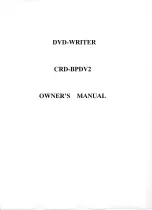
1-61 High Speed Load Compensation
Range:
Function:
100 %
*
[0 - 300
%]
Enter the % value to compensate voltage in
relation to load when the motor is running
at high speed and obtain the optimum U/f
characteristic. The motor size determines the
frequency range within which this ameter is
active.
Motor size [kW]
Change-over [Hz]
0.25-7.5
> 10
11-45
< 5
55-550
< 3-4
NOTE
1-61 High Speed Load Compensation
will not have effect
when
= [1] PM, non salient SPM.
1-62 Slip Compensation
Range:
Function:
0 %
*
[-500 - 500
%]
Enter the % value for slip compensation, to
compensate for tolerances in the value of
n
M,N
. Slip compensation is calculated
automatically, i.e. on the basis of the rated
motor speed n
M,N
.
NOTE
will not have effect when
= [1] PM, non salient SPM.
1-63 Slip Compensation Time Constant
Range:
Function:
Size related
*
[0.05 - 5.00
s]
Enter the slip compensation reaction
speed. A high value results in slow
reaction, and a low value results in
quick reaction. If low-frequency
resonance problems arise, use a
longer time setting.
NOTE
1-63 Slip Compensation Time Constant
will not have effect
when
= [1] PM, non salient SPM.
1-64 Resonance Dampening
Range:
Function:
100 %
*
[0 - 500
%]
Enter the resonance dampening value. Set
and
1-65 Resonance Dampening Time Constant
to
help eliminate high-frequency resonance
problems. To reduce resonance oscillation,
increase the value of
.
NOTE
will not have effect when
= [1] PM, non salient SPM.
1-65 Resonance Dampening Time Constant
Range:
Function:
5 ms
*
[5 - 50 ms] Set
and
1-65 Resonance Dampening Time Constant
to
help eliminate high-frequency resonance
problems. Enter the time constant that
provides the best dampening.
NOTE
1-65 Resonance Dampening Time Constant
will not have
effect when
= [1] PM, non salient
SPM.
1-66 Min. Current at Low Speed
Range:
Function:
Size related
*
[ 1. - 200.
%]
Enter the minimum motor current at
low speed.
Increasing this current improves
developed motor torque at low speed.
Low speed is here defined as speeds
below 6% of the Nominal Speed of
Motor (
) in
VVC
plus
PM Control
3.3.7 1-7* Start Adjustments
1-71 Start Delay
Range:
Function:
0.0 s
*
[0.0 - 120.0 s] The function selected in
is active in the delay period.
Enter the time delay required before
commencing acceleration.
1-72 Start Function
Option:
Function:
Select the start function during start delay.
This parameter is linked to
[0]
DC Hold/
Motor
Preheat
Energizes motor with a DC holding current
(
) during the start
delay time.
[2]
*
Coast
Releases shaft coasted converter during the
start delay time (inverter off).
Available selections depend on
[0] Asynchron:
[2] coast
[0] DC-hold
[1] PM non salient:
Parameter Description
VLT
®
HVAC Drive Programming Guide
44
MG.11.CC.02 - VLT
®
is a registered Danfoss trademark
3
3
















































